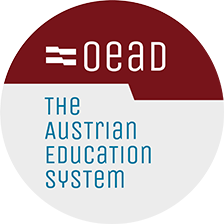Compulsory Secondary School
- A four-year form of education that commences after four years at Primary School.
- Pupils may transfer from the Academic Secondary School Lower Level (AHS) to the Compulsory Secondary School.
- Educational and careers guidance form the foundation for educational and careers decisions taken later.
- Individualisation and internal differentiation form the key characteristics.
- All-day education is offered at many Compulsory Secondary Schools.
- Upon completion: Attendance at a more advanced medium level or upper level school or a pre-vocational school.
General
The Compulsory Secondary School has been the regulatory form of education since 1 September 2012. Since the 2018/2019 school year, all former Lower Secondary Schools have become Compulsory Secondary Schools. By creating a broad, legally-assured foundation, it has been possible to create a single type of school for all children aged between 10 and 14 years, after completing four years in the Primary School.
The curriculum in the Compulsory Secondary School
The Compulsory Secondary School curriculum combines the performance requirements of the AHS-Lower Level with a new culture of teaching and learning. The focus is on the potential and talents of the students.
In addition to the special forms of Music Compulsory Secondary Schools and Sports Compulsory Secondary Schools, the curriculum provides for four possible focus areas:
1. Linguistic-humanistic-humanities
2. Natural science-mathematics
3. Economic-life science
4. Musical-creative
In addition, further autonomous emphases can be set at the respective school locations.
Numerous Compulsory Secondary Schools offer all-day education. Information on this can be obtained from the relevant education directorate.
Special Needs Education
As was the case previously, children and young people with special needs and who require Special Needs Education, will be integrated into the Compulsory Secondary Schools. The fact that pupils with and without disabilities learn together on a daily basis means that barriers are lifted and links established, which will increase the social competence of the children involved. In the integrated classes that form part of this model, subject teachers work together with special needs teachers, whose role it is to work with the subject teacher to deliver differentiated teaching, whilst placing an emphasis upon the special educational needs that exist within the group.
Educational and careers guidance
In years 3 and 4 of the Compulsory Secondary School, particular attention is given to pupils' further vocational career or educational progression. This takes place in the context of "careers education". The obligatory exercise of careers education takes place as a separate subject at least one hour a week. In addition to this one weekly hour, 32 yearly hours are supposed to be integrated into compulsory subjects. From the 7th year of education onwards, the decision as to the type of progression that will be appropriate for a pupil will be accompanied by regular discussions with the parents and the child.
The next step:
After successfully completing the four-year Compulsory Secondary School, pupils have the following options:
- Attendance at the Academic Secondary School Upper Level (AHS-Oberstufe) or a School for Intermediate Vocational Education (BMS), a College for Higher Vocational Education (BHS) or a Pre-vocational School (PVS).
- Pupils who wish to take up an apprenticeship must first complete nine years of education, by attending a Pre-vocational School (Polytechnische Schule) or a one-year medium-level vocational school or successfully complete Year 9 of an Academic Secondary School Upper Level (AHS), a School for Intermediate Vocational Education (BMS) or a College for Higher Vocational Education (BHS).
- Pupils who upon completing Year 4 of the Compulsory Secondary School, have already completed their 9 years of compulsory education (because they had repeated a year) can commence an apprenticeship immediately.
Pupils with special educational needs are able to attend a Pre-vocational School (Polytechnische Schule) or undertake Individual Vocational Training (extended apprenticeship period/partial qualification).


































